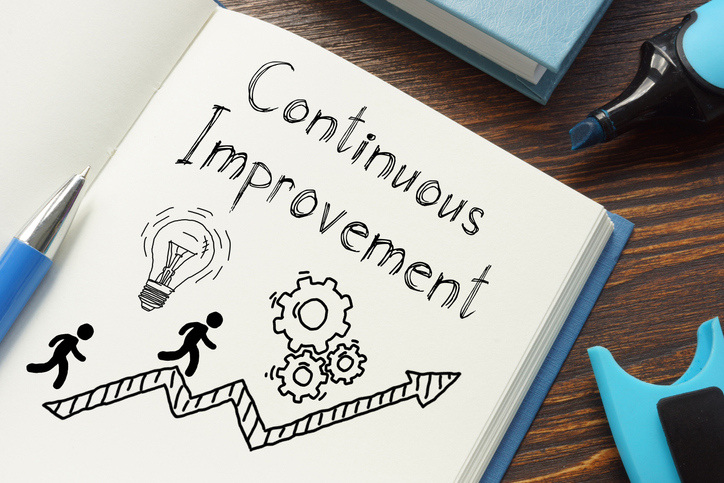Communicating with Your Customers: An Easy Way to Build Trust and Credibility

Every business owner knows that customer service is critical to staying competitive. But what about communicating expectations? Do you ensure your print buyers know what to expect when doing business with you? Recently, I received an email in response to an order placed by someone in our organization. It impressed me so much that I printed it out and shared
Want to Be a Better Printer? Start by Dusting Off Your Tools

Every so often, I like to go through the drawers of my tool chest in the barn and take an inventory of things. I’m not talking about an extensive certified public accounting inventory, but just a look around to see what I already have that I might have forgotten existed. I’ll usually find multiples of things that I forgot I
Creating a Culture of Improvement (Without Burning People Out)

Improvement is a concept akin to owning a print business or simply being human. We’re all geared toward ways to improve ourselves, improve processes, and become more efficient. Don’t believe me? Check out all of society’s recent advertisements, and you’ll see adjectives like “better,” “greater,” and just about every other “er” you can think of. While striving for improvement is
Grow Relationships. Grow Your Print Business.

I like talking to people to find out what makes them tick. Why? Because people are interesting. When you learn what motivates a person to get up in the morning, what brings them joy or makes them light up, you get to communicate on a whole different level than just simple conversation. This new level of communication is where connections
Why Do You Do Things That Way? The Power of Self-Reflection

As the world continues to feel the climate of change, it reminds me of a story that Zig Ziglar used to tell that I’m sure you’re all familiar with. A man’s wife sent him to the store to buy a ham. The man brings the ham home and his wife instantly notices and comments that he didn’t have the end
Living on the Edge

When I was younger, I coined the phrase: “If you ain’t living on the edge, you’ve got too much room!” Now that I have matured a bit, I prefer a little more cushion or “wiggle room,” if you will. But that being said, if I don’t stretch myself from time to time, I become inelastic… if that’s a word (my
Two Words that Could Change Your 2021

The new year brings with it a chance to start again. It’s a time to let go of the previous year and look forward to a fresh start. For me, cleaning and organizing are an annual goal of mine at the beginning of each year. Sometimes the goal is obvious to others (and they can tell the OCD fairy has
A Little Reflection Goes a Long Way: 6 Questions to Ask Yourself

While some of us may feel like we’re on the backside of the v*rus shutdown, many of us may still be in the throes of the turmoil, wondering how we are going to make it. If you’re still wondering, “What in the world is going on here?!!”, let me assure you that you are not alone. Wherever you may find
The One Thing I Wouldn’t Want to Be Without

I was asked the other day what my most valuable asset was. A question like that definitely makes one think long and hard. What is the one thing that you would not want to be without? After some pondering (no, pondering doesn’t do a question like this justice), after some soul searching, I came to the conclusion that if I
3 Email Examples to Prepare Your Print Buyers for the Rebound

Has your world recently been filled with clichés like these: “Tough times don’t last, tough people do.” “This, too, shall pass.” “Every cloud has a silver lining.” I don’t know about you, but I don’t need clichés right now. I need some real breakthroughs. As Harry Truman once said, “The only thing new in the world is the history we

